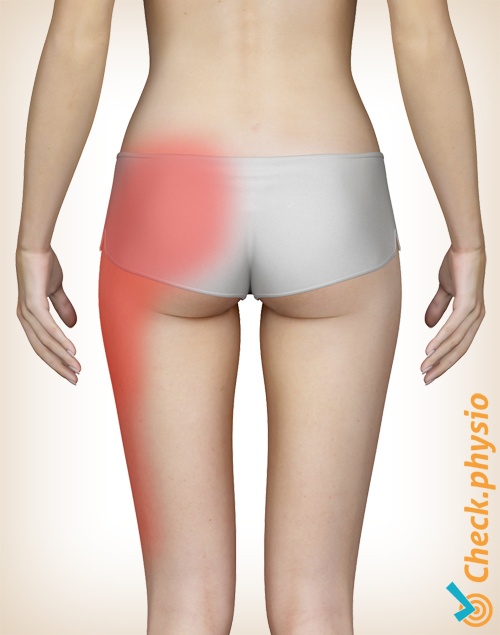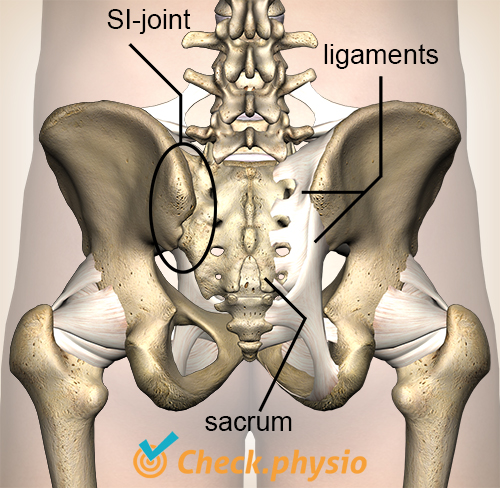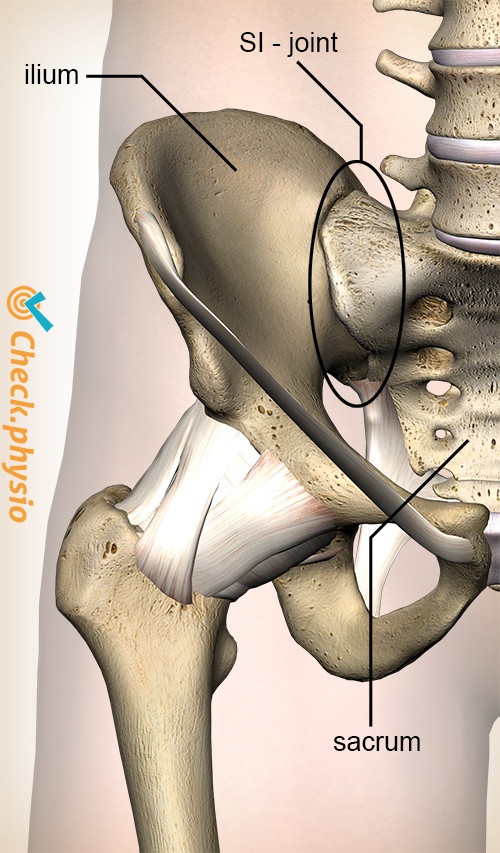- Conditions
- SI joint pain
SI joint pain Symptoms of the sacroiliac joint
Introduction
The sacroiliac joints (SI joints) are located to the left and right of the midline in the lower back. Together, they form the connection between the sacrum and the two pelvic halves. Problems with the SI joint result in pain in the buttock region, which may radiate into the leg.
The connection between the sacrum and one side of the pelvis (ilium) is very rigid. This is the reason why there was discussion for a long period whether this should even actually be called a joint. Despite the limited mobility, it has been demonstrated that some movement takes place between the various bone segments.

Description of condition
It is thought that SI problems are caused by hypo-mobility (stiffness), hyper-mobility (increased mobility) and/or damage to the joint ligaments. The symptoms are also grouped under the name "SI-syndrome".
Cause and history
A fall on the buttock(s) is a common cause of SI pain. The symptoms can also be caused by a motorcycle accident or when somebody missteps on a stair. Other factors that may result in SI pain are infection, malignancy, pregnancy and repetitive overloading movements in the SI joint (micro trauma). In 35 % of cases there is no obvious cause and the symptoms occur spontaneously.
Signs & symptoms
- Pain in the lower back and the buttock region, usually slightly off-center.
- The pain may radiate into the thigh, in some cases even down to the foot.
- Symptoms may be present when standing, walking, sitting, bending and making twisting movements.
- Direct pressure on the ligaments of the SI joint can provoke the symptoms.
Diagnosis
Various tests have been developed to detect SI pain. However, it remains tricky. The patient's story and a physical examination combined can give a fairly accurate idea of the symptoms.
In exceptional cases, the diagnosis can be confirmed by an injection in the SI joint. If this temporarily reduces the pain, it means that the SI joint was the cause of the symptoms.
Exercises
An exercise program can be followed here, with mobilizing exercises for the SI joint, or make an appointment with a physiotherapist near you.
More info
You can check your symptoms using the online physiotherapy check or make an appointment with a physiotherapy practice in your locality.
References
Cleland, J.A. & Koppenhaver, S. (2011) Netter's orthopaedic clinical examination: an evidence-based approach 2nd ed. Philadelphia: Saunders Elsevier.
Simopoulos, T.T., Manchikanti, L., Singh, V., Gupta, S., Hameed, H., Diwan, S. & Cohen, S.P. (2012) A systematic evaluation of prevalence and diagnostic accuracy of sacroiliac joint interventions Pain Physician 2012; 15:E305-E344.
Muhlner, S.B. (2009) Radiofrequency neurotomy for the treatment of sacroiliac joint syndrome. Review Curr Rev Musculoskelet Med. 2009 March; 2(1):10-14.
El, A. van der (2007) Manuele diagnostiek. Wervelkolom Rotterdam: Uitgeverij Manthel.


